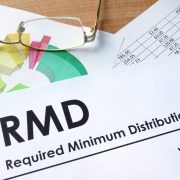Three Ways to Use a Self-Directed IRA to Boost Retirement Income
As people transition from their working years to their retirement years, their investment focus generally transitions along with it. Until now, they had to concentrate on generating risk-adjusted growth, with more and more emphasis on safety of capital. But once they no longer have that bi-weekly paycheck coming in, or that income from running a business or self-employment, their Self-Directed IRA and other retirement accounts have to take on an all-important duty: Provide a reliable stream of income for them to live on.
In the past, traditional investors and Self-Directed IRA investors didn’t have to look to hard to generate income. A couple of generations ago, stock dividends were more than bond interest, and CDs were paying 6 percent, 8 percent or more.
A million dollar nest egg could be relied on to provide $60,000 per year in income without having to dip into principal. Fixed annuities had better payouts as well – and came with important guarantees, for those willing to pay a price.
None of these vehicles are paying what they used to – but Americans are living longer and longer into retirement. Which means dipping into principal is a much dicier proposition now, too. Fortunately, a Self-Directed IRA may help you unlock sources of income that would be difficult to access using a conventional Wall Street investment company’s retirement account.
Here’s why: A Self-Directed IRA doesn’t limit your investment universe to the low-interest bonds and lower-dividend stocks and mutual funds most peoples’ brokers have available to sell them. Self-Directed IRAs let you diversify beyond stocks, bonds and cash. This enables you to explore investments that potentially offer greater income yields than would otherwise be made available to you.
For example:
Private bond placements. Many times, companies need to borrow money, but not have access to the public bond markets. To float a bond or do an initial public offering on a stock market, there are huge underwriting costs that can be prohibitive for a small company. Their risk profile may not meet the needs of conventional lenders. And so they must attract capital on the markets – often by offering an above-market interest rate – often 1-3 points above the publicly traded bourses.
But you can’t get these private placements just by calling your corner broker. If you want your IRA or Roth IRA to be generating the interest rates available from private bond placements, you must usually use a Self-Directed IRA.
Real Estate IRAs
A real estate IRA is a Self-Directed IRA account that is primarily invested in real estate. Long a proven store of wealth and source of income and inflation protection, real estate is in many ways an ideal asset class for retirees and near retirees. Real estate offers regular rent income that potentially increases over time, the potential for capital appreciation, and downside protection: Paper assets may become worthless, but real estate almost never falls to zero value.
Privately Traded REITs
Don’t want to be a landlord? Have a money manage company do it for you. Real estate investment trusts (REITs) are essentially funds invested primarily in real estate, that are required by law to pay out at least 90 percent of their income in dividends to shareholders. Unlike C corporations (like publicly traded stocks), REIT dividends aren’t subject to double taxation. REIT dividend income is not taxed at the corporation level, but flows through to your individual tax return. In a Roth IRA, you may pay no taxes at all on a REIT.
There are many excellent publicly traded REITs available, but if you are willing to do more due diligence and are willing to give up the convenience of liquidity, you may find that privately traded REITs – REITs that are not traded on public stock exchanges – can pack a much bigger dividend wallop per dollar invested – even with a very similar underlying portfolio. This is because stock market investors often bid up REIT stock prices so high that their dividend income is unjustly low. Liquidity comes at a very serious price.




